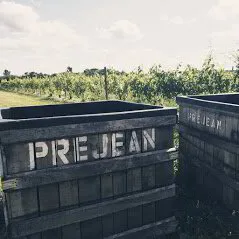Wines and Winemaking
Winegrowing & Winemaking
The term “wine growing” is probably confusing to most people when you first encounter it. Corn is grown, beans are grown and, of course, grapes are grown and then turned into wine.The term “wine growing” is probably confusing to most people when you first encounter it. Corn is grown, beans are grown and, of course, grapes are grown and then turned into wine.
But you have to first understand something about our capabilities as sensory creatures. We can smell certain odors at the parts per trillion level.
To use our location as an example, Seneca Lake, which our winery overlooks, is a 38-mile long, 618- foot deep lake that holds 4.2 trillion gallons of water. If you were to put less than a gallon of certain chemical constituents found in grapes (if they would remain stable, that is) into the lake, you would be able to smell them anywhere on the lake. While my example might not be perfect, I hope you simply appreciate the impact of the scale and the amazing ramifications of this impact on what is traditionally thought of as wine making.
If you understand this impact, than the necessity of “growing wine’’ (i.e., growing the grapes to produce certain characteristics) becomes apparent. Small changes in composition can shift characteristics into the range of perception and if this shift happens to the point that undesirable constituents are the dominant characteristic then that can be a problem for the resulting wine. It all depends on whether or not those characteristics, which are preferable, dominate those that are not preferable. This is why the emphasis has to be on wine growing, looking at the end product being not the grapes, but rather the wine. Vine yield, vine variability, disease management, cultural practices, (i.e leaf pulling) and water management all contribute to wine quality and have to be managed to ensure quality wine.
A balanced vineyard is a goal of winegrowing and generally it is more an ideal to strive for and approximate. The conditions that can lead to imbalance in a vineyard, an important one being the weather, are variable from year to year. Unlike some regions, the Finger Lakes has rainfall during the growing season and we have to contend with harsh winters.

